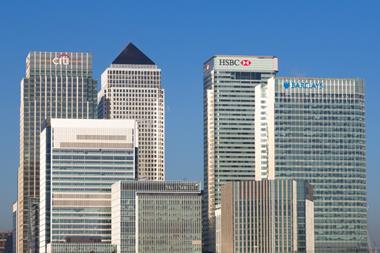The timing of a company’s disclosure of environmental, social and governance (ESG) information can make a difference to how that information is valued by professional investors, according to a new academic paper.
The researchers concluded that corporate social responsibility (CSR) information “is not always treated entirely rationally by capital market participants”.
Alexander Bassen, professor of capital markets and management at the University of Hamburg, Germany, was one of the authors of the paper. He told IPE the researchers chose the term CSR rather than ESG to address the corporate perspective. In academic literature, CSR is often understood as representing the perspective of corporates, while ESG represents the investor.
The experiments involved presenting European – mostly German – professional mainstream investors either with CSR information alongside a company’s financial disclosure, similar to an integrated report, or with CSR disclosure in a standalone report “temporally disconnected” from the firm’s financial disclosure.
The experiment was run twice, once with positive CSR information signalling potential future growth, and then with information giving a potential negative signal about potential future risks.
According to the article’s authors, the results suggested that CSR information released at a different time to that for financial data could lead to “asymmetric anchoring” by investors.
The researchers found that investors receiving positive CSR information in this way did not react to it, indicating a strong anchor to the evaluations based solely on financial data. When CSR and financial information were disclosed simultaneously investors seemed to include the positive CSR information into their valuations and generate higher firm valuations than investors who received the information sequentially.
However, when the CSR information was negative investors responded to it much in the same way whether or not its disclosure was “temporally disconnected” from the financial information.
“They almost fully overcome any anchoring effect from initial valuations based on financial information only,” according to the researchers.
“Investors’ asymmetric anchoring is induced by differences in cognitive effort invested in CSR information processing, which depends on whether CSR information signals future profits or losses,” they said.
Bassen’s co-authors were Markus Arnold, from the Institute of Accounting at the University of Bern in Switzerland, and Ralf Frank of the German Association of Investment Professionals (DVFA). The DVFA provided the access to the investment professionals participating in the experiments, hence the German skew.
The article can be found here.
Impax to buy US SRI Pioneer Pax
Impax Asset Management is to acquire Pax World Management LLC, one of the world’s first socially responsible investors, in a $52.5m (€43.9m) deal.
Together, the asset managers would have £10.3bn (€11.7bn) of assets under management.
The acquisition made strategic sense because both Impax and Pax were “pioneering firms focused on the transition to a more sustainable economy”, according to a statement.
In addition, the companies said there was growing interest among asset owners around the world “in allocating capital to high-growth sustainable investment opportunities, in investment products that take a broad view of risk, including environmental, social and governance (ESG) factors, and/or that demonstrate positive, non-financial impact”.
Pax was founded in 1971, when it introduced what it says was the first publicly available mutual fund in the US to use social as well as financial criteria in the investment decision-making process.
Under the terms of the agreement, Impax will acquire 100% of Pax with an initial valuation of $52.2m, plus additional contingent payments of up to $37.5m in 2021, depending on Pax’s performance.
ESG integration expectation surprise
Less than half of investment consultants and investors responding to a CAMRADATA survey said they expected asset managers to have ESG considerations integrated in their investment process. Last year’s survey found half of respondents expecting ESG integration at asset managers.
Many investors have proclaimed their commitment to ESG investing and in recent years there has been a strong move in this direction, with companies signing up to measures such as the UN’s Principles for Responsible Investment.
Sean Thompson, managing director at CAMRADATA, told IPE: “We were surprised that investors were suggesting that it wasn’t as important to them to have ESG integrated, or at least their asset managers to have ESG integrated in the investment process.
“Overall it was an interesting one. While there were some undecided as well, it wasn’t clear-cut that people were saying ‘it’s very important’.”
He suggested the result may simply be down to this year’s cross-section of respondents.
There were 118 respondents to this year’s survey, of which 58% were asset managers and 42% were investment consultants and institutional investors. Most of the asset manager respondents managed money for pension schemes and insurance companies, while three-quarters of the 25 consultant respondents provided services to pension schemes only.
The majority of asset managers in the survey said they have ESG integrated in their investment process. The survey can be found here.
Beware green bonds’ exposure
Green bonds are more exposed to environmentally-related credit risks, the Bank of International Settlements (BIS) has noted in its latest quarterly review.
“While the management of environmental risks extends far beyond green bonds, it is important to avoid the misperception that green bonds are insulated from such risks,” it said. “In fact, among all rated bonds, those with a green label are more likely to be in sectors that are exposed to such risks.”
The central bank organisation said that within a universe of corporate debt rated by Moody’s, 13.2% was issued by institutions in industries with moderate or greater exposure to environmental credit risk, and around 2.9% by institutions in industries classified as either immediate or emerging elevated risk.
Looking at the industry composition of green bonds alone, however, 22.4% were issued in sectors with moderate or greater exposure to environmental credit risk, and nearly 14% by institutions in industries classified as either immediate or emerging elevated risk.
The percentage of green bonds in high risk sectors was four times as much as that for overall rated debt, it said.












No comments yet